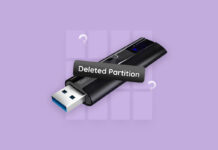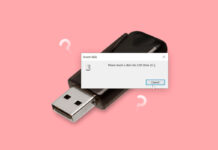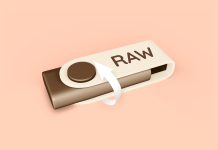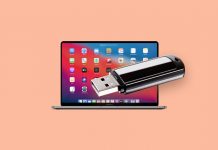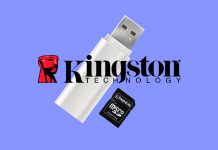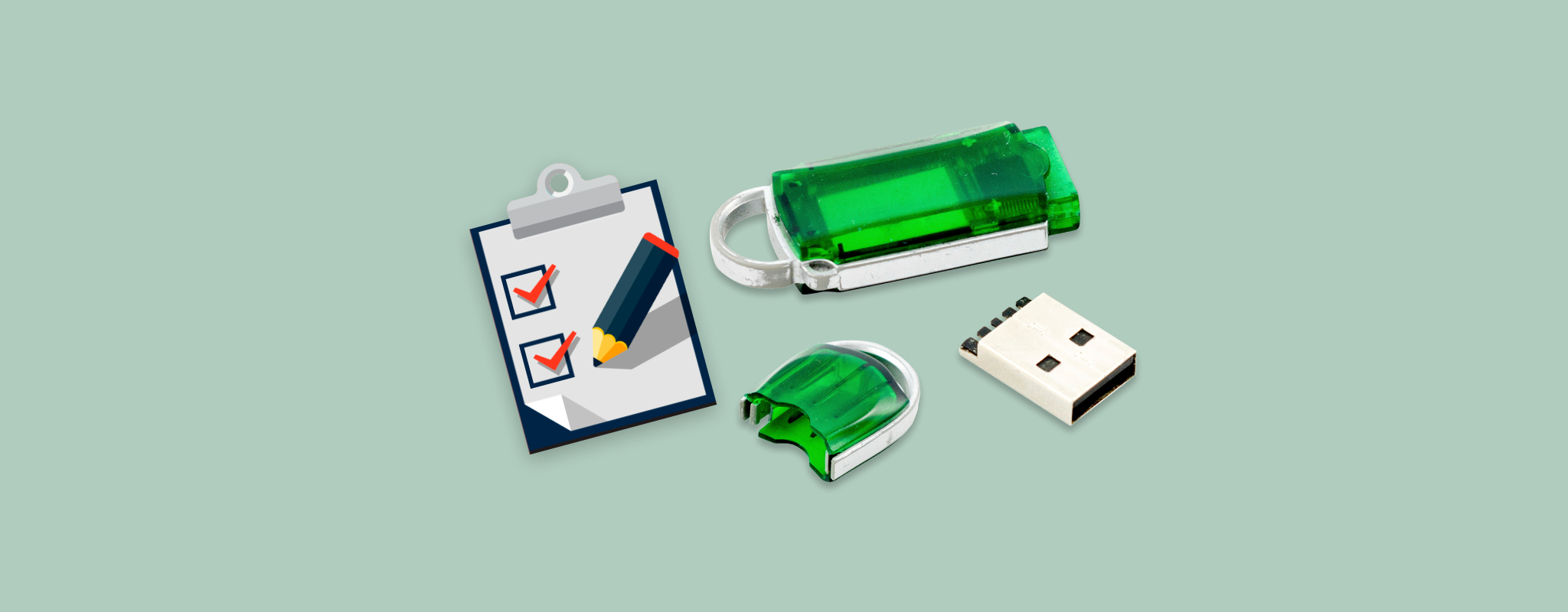
Flash drives can be an easy way to carry your work documents or movies around, until that one day when your computer can’t seem to read it. When that happens, there’s a good chance that your flash drive has become corrupt. The first thing you should do then is to recover files from a corrupted USB drive. Once you’ve recovered your files, you can try a few fixes to repair it.
What is a Corrupted USB Flash Drive?
Your USB flash drive is considered corrupted when the computer fails to complete a requested process because of either a logical or physical issue with your flash drive’s memory chip. A USB flash drive may become corrupt because of the following reasons:
| Reason | Description |
| 📉 Wearing down of NAND memory | The NAND flash memory’s floating gate transistors consist of an oxide layer. When you erase data, the NAND flash block needs to be erased before you’re able to write new data. Over time, this process of erasing breaks down the oxide layer within these floating gate transistors, resulting in the flash drive becoming corrupt. |
| ⚡Abrupt power loss | Abrupt power loss when you’re using the flash drive can cause logical errors on the drive, causing it to become corrupt. |
| 🖥️ Problems with the USB driver | The USB driver facilitates the communication between the USB device and your computer. If the drive is outdated or has become corrupt, it can prevent the flash drive from functioning correctly. |
| ⏏️ Removing the flash drive without ejecting it first | Removing a flash drive without ejecting has the same effect as abrupt power loss. It causes logical errors on the drive, causing it to become corrupt. |
| 💥 Operating system crashes | Operating system crashes while the flash drive is still in use can result in filesystem corruption and other logical errors. In such cases, you won’t be able to access the data on the drive. However, logical errors are easier to fix than physical damage so you should be able to reuse the drive. |
When your USB flash drive is corrupt, you’ll typically encounter issues like disappearing files or errors like “file not recognized” when you try to open the files. Before you hit the panic button and worry about potentially losing hours’ worth of work, you should do two things: stop using the flash drive right away and start trying to recover files from the corrupted USB flash drive.
Before we talk about how you can retrieve files from a corrupted USB flash drive, you should verify if you’ll be able to scan the drive. To do this:
- Press Win + R, type diskmgmt.msc, and press Enter. Doing this will launch the Disk Management console.
- Check if the USB flash drive appears in the console. If you see the USB flash drive, verify if its size is listed correctly. If it is, you’ll be able to scan the USB and recover files from it.
How to Recover Data from a Corrupted Flash Drive?
You can recover the data on a corrupted flash drive using various methods. However, the easiest and most user-friendly way to recover data is using a data recovery solution like Disk Drill.
Method 1:Use Data Recovery Software
It’s best not to tinker with a corrupt USB flash drive until you’ve recovered all the important files from it. Instead of scanning the USB flash drive directly, create an image of the flash drive so you don’t end up causing further damage. You can create an image and scan it with a tool like Disk Drill like so:
- Download Disk Drill and install it on your PC. The free version allows you to recover files up to 500MB.
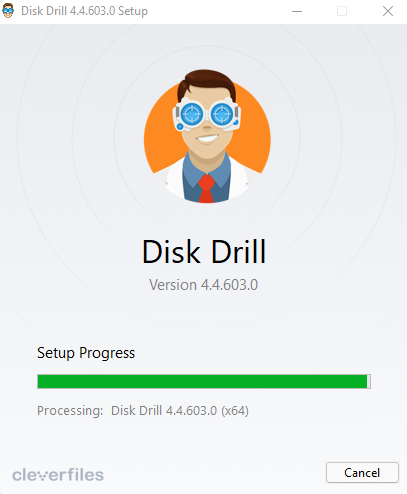
- Launch Disk Drill once you’ve installed it and switch to Data Backup from the left sidebar. Select the corrupt USB flash drive and click on the Byte-to-Byte Backup option at the top-right.
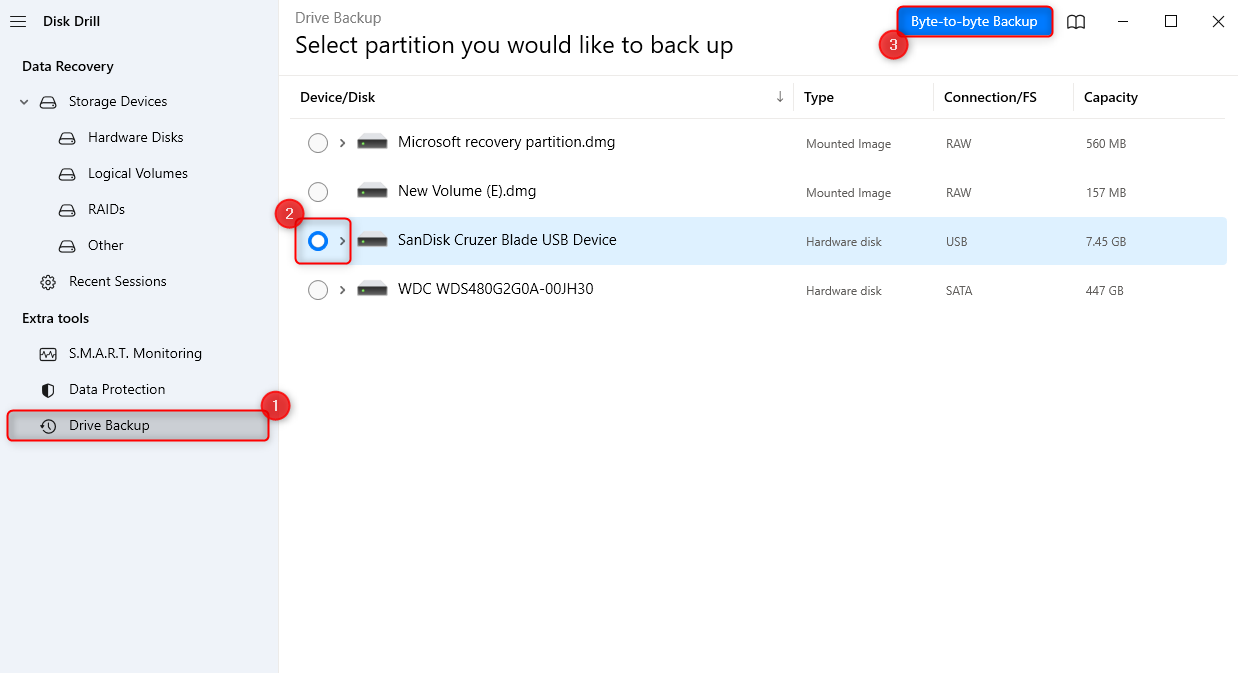
- Insert a name for the backup file, select file type, and a path where you want to save the file. Leave the format, from, and to fields to their default. Select OK to create the file.
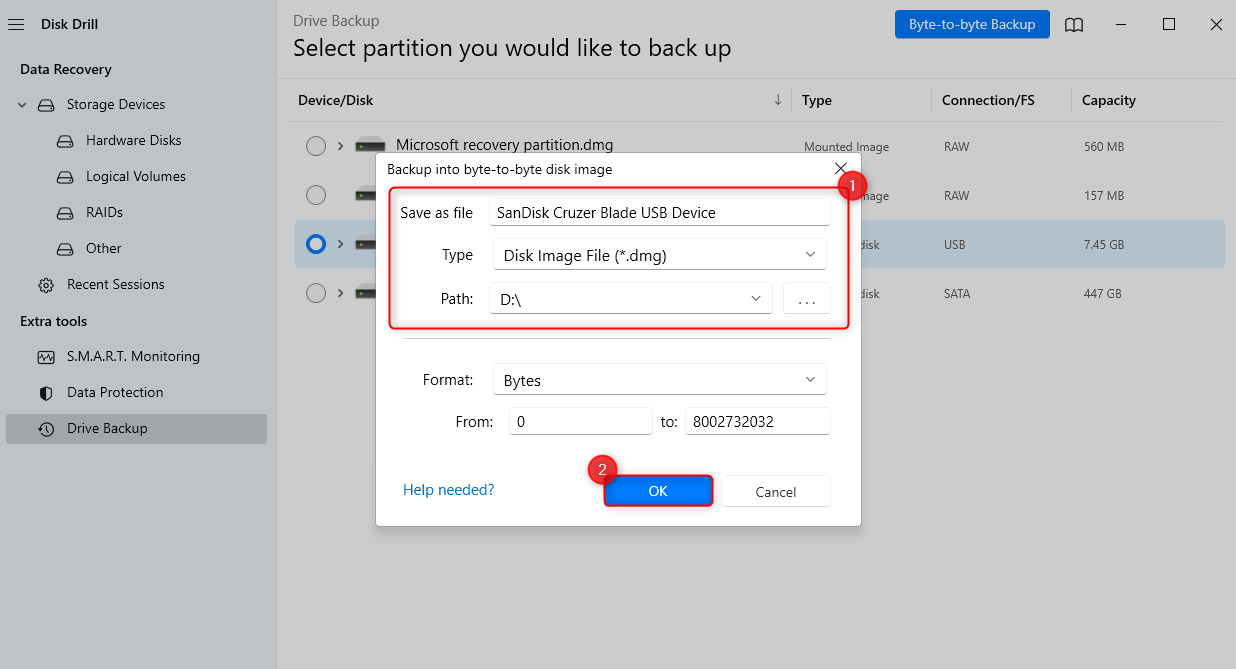
- Once Disk Drill completes creating the backup file, go back to the home screen and select Attach disk image. Select the backup file and click Open.
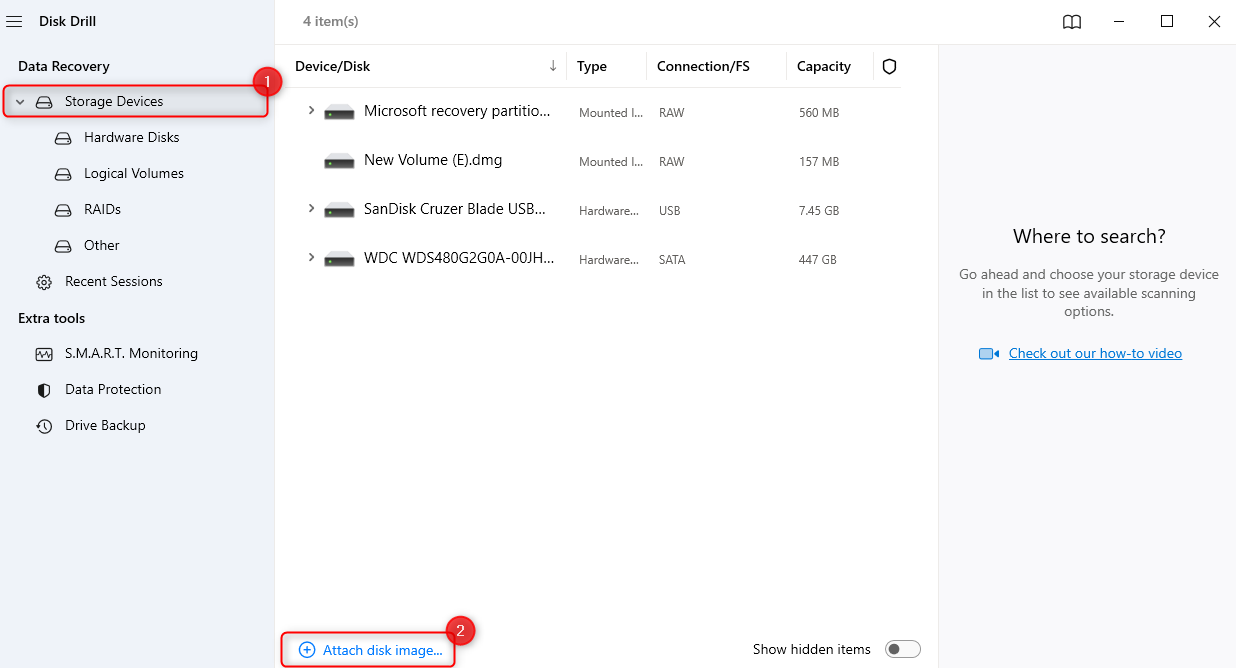
- Select the mounted image from the Disk Drill home screen and click on the Search for lost data button.
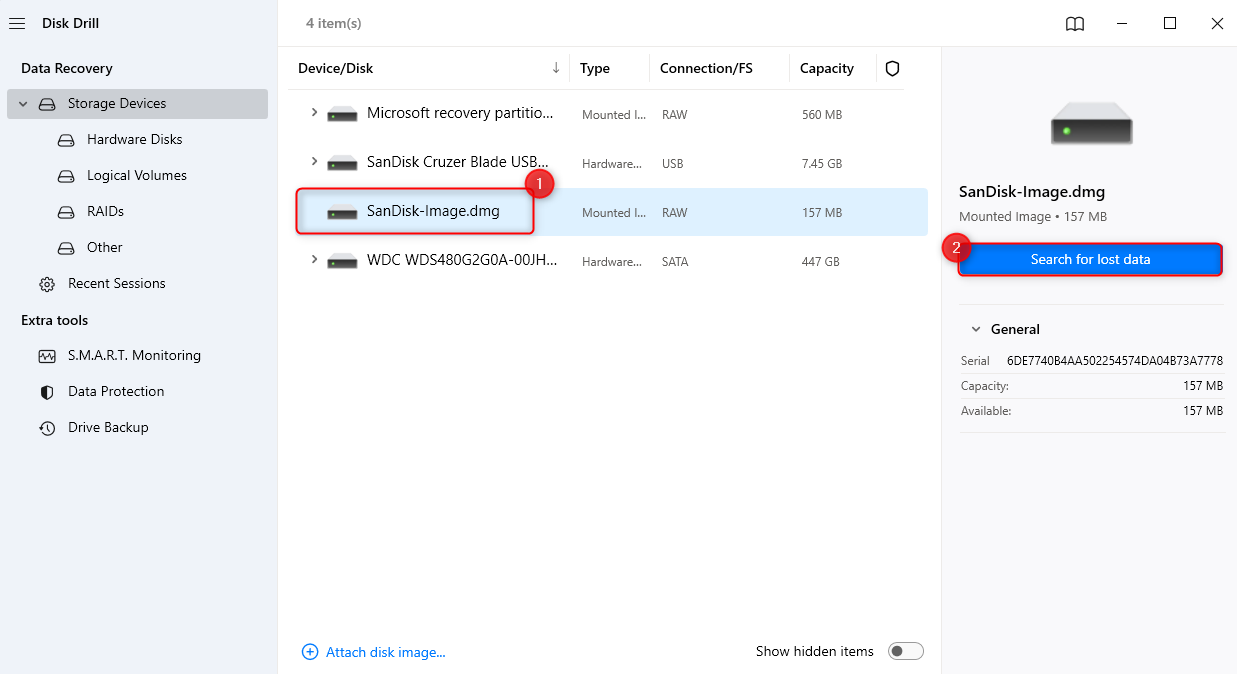
- Once the scan completes, you’ll see a list of recoverable files. Choose the ones you want to recover by checking the box next to the file name and clicking on the Recover button at the bottom. You’ll see a small window pop-up where you’ll need to select a location for recovering the file. Select a location other than your flash drive, and click Next.
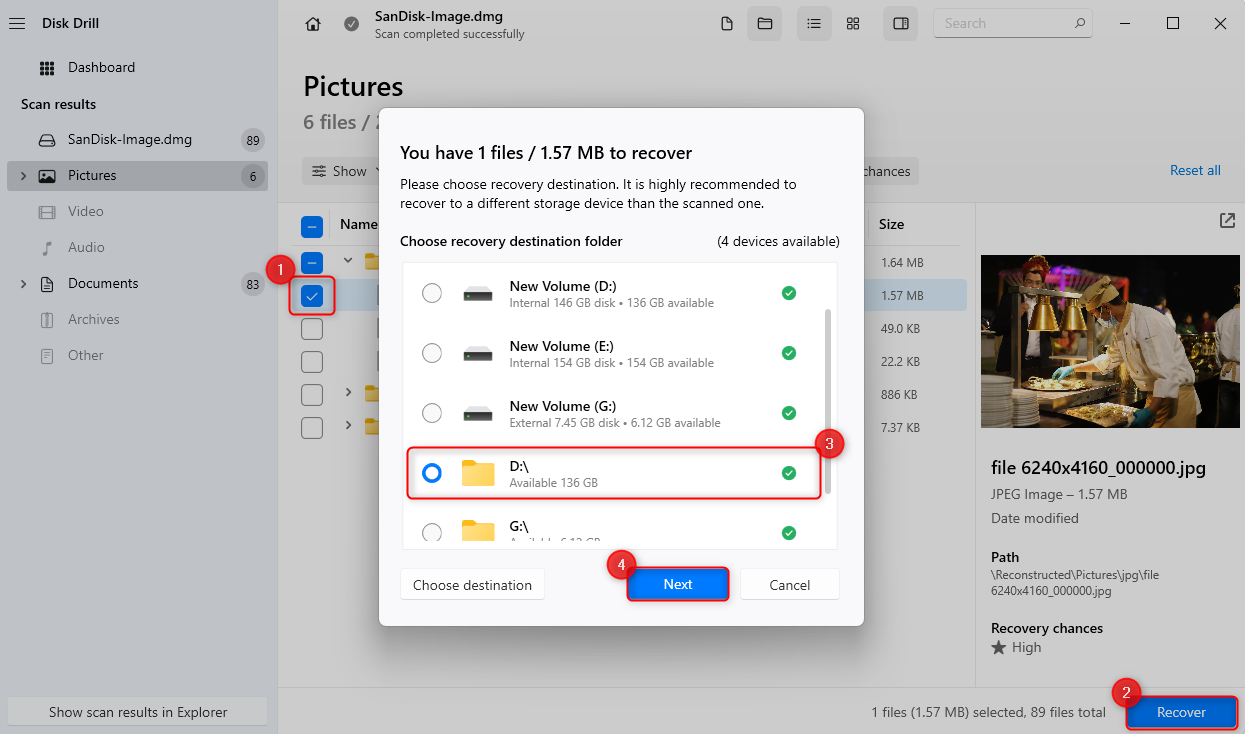
Method 2:Use Windows File Recovery Tool
Windows File Recovery is a tool from Microsoft. Unlike Disk Drill, Microsoft’s recovery tool doesn’t have a graphical user interface. It’s a command-line utility available for download for free on the Microsoft Store.
It can be a great tool when you only want to recover recently deleted files from a flash drive. The only downside? The lack of features — Windows File Recovery doesn’t have a graphical interface, doesn’t let you select specific files to recover, and doesn’t offer additional features like data backup.
If you want to use Windows File Recovery:
- Download Windows File Recovery from the Microsoft Store.
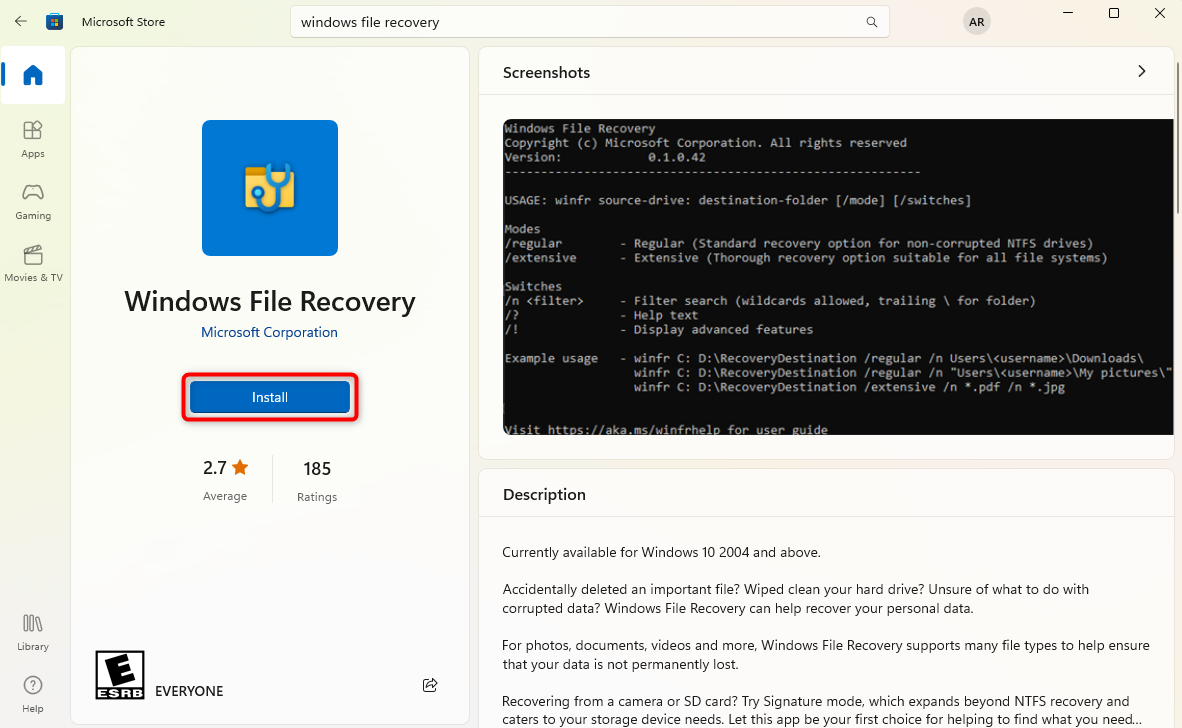
- Launch Windows File Recovery. You’ll see an elevated Command Prompt launch.
- Execute the following command:
winfr E: D: /extensive /n RecoveryFolder
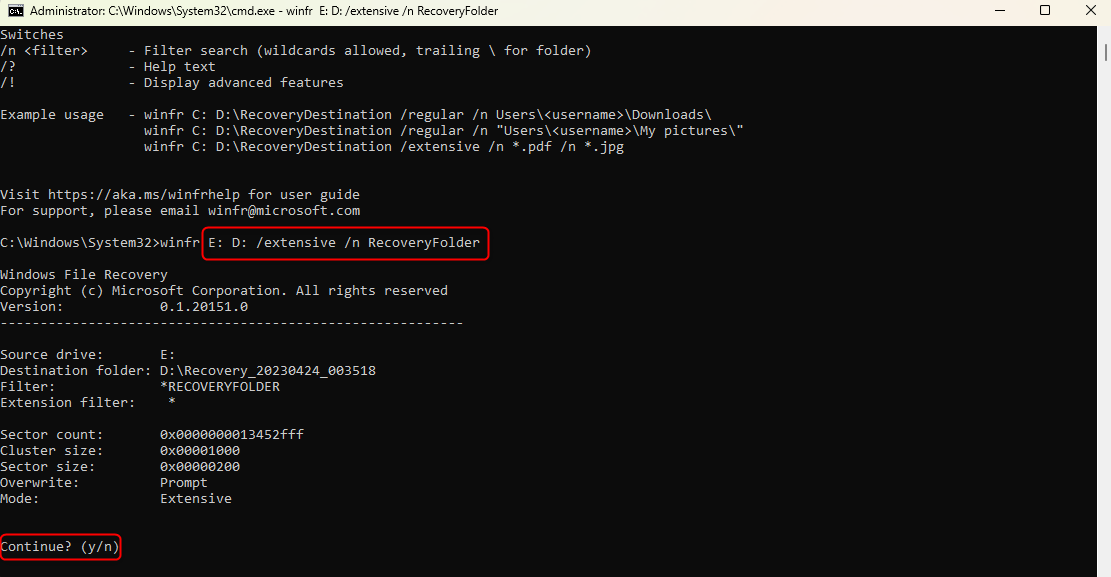
- Type Y when asked if you want to continue.
Here, replace E: with your flash drive’s letter and D: with the drive where you want to store the recovered files. The text “RecoveryFolder” means the recovered files will be stored in that folder in the recovery drive. For example, in the example above, the data will be recovered in “D:\RecoveryFolder”.
Using “/extensive” in the command is a switch that tells the utility to run a thorough scan. If you want a superficial scan, use the “/regular” switch instead.
Once you’re done, you’ll see the recovered files in the folder you selected for recovery.
Method 3:Use the ATTRIB Command
In case you’ve recently detected malware on the flash drive and no longer see the files in there, the reason could be changed attributes. This means you haven’t lost the data; the data is just invisible right now.
All folders, subfolders, and files have attributes. Malware uses the fact that Windows uses these attributes for access control to make these files disappear. When malware changes these attributes, you won’t see the files on your USB drive even though they’re still present.
It’s easy to fix the changed attributes using the ATTRIB command. Here’s how to bring those files back:
- Press Ctrl + R, type cmd, and press Ctrl + Shift + Enter.
- Navigate to the flash drive by typing in the drive letter assigned to the drive.
- Type the following command and press Enter:
attrib -h -r -s /s /d *.*
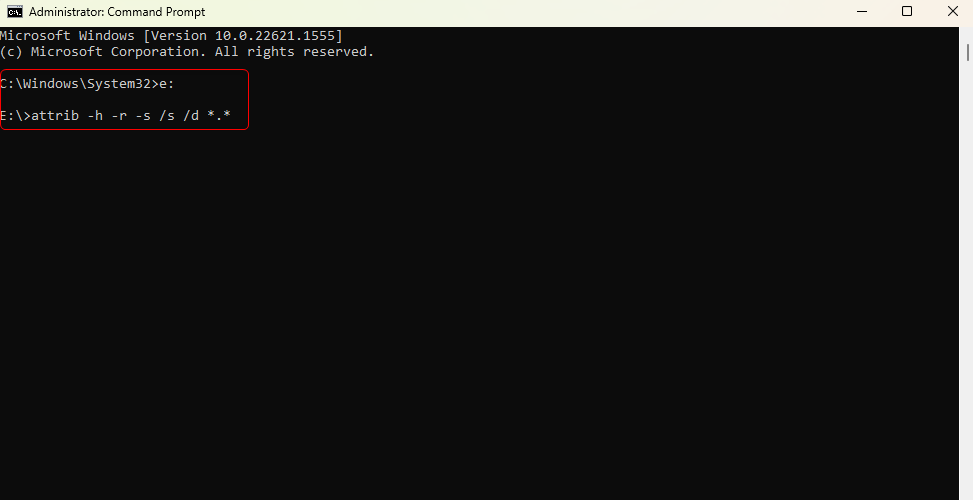
When you’re done, access the flash drive using File Explorer. You should see all your files there.
Method 4:Apply to Data Recovery Service
In cases where the USB drive has been severely physically damaged, you’ll need a professional data recovery service’s help.
When you contact a data recovery service, they’ll quote a price. If it’s acceptable, you ship the drive to them. They work on recovering the data in their lab using specialized equipment. Once the data is recovered, they send the hard drive back to you.
The most reliable services like Cleverfiles will return the drive at no charge in cases where they can’t recover the data.
How to Fix Corrupted USB on Windows
Once you’ve recovered the files, you can start trying to fix the corrupt USB flash drive. There are several fixes you can try based on what caused the flash drive to become corrupt as discussed below.
Method 1:Connect the Corrupt Flash Drive to Another Computer or USB Slot
Sometimes, your computer won’t detect a USB flash drive because of reasons other than corruption. For instance, if your USB is formatted as a file system that isn’t compatible with your PC, it won’t detect your flash drive.
It can also be a hardware issue. If your USB port is damaged, your computer probably won’t detect the flash drive.
You can fix both issues by inserting your pen drive into another PC or a different USB slot.
Method 2:Check Disk Utility (CHKDSK)
Chkdsk is a built-in command-line utility in Windows that allows you to check file system integrity and fix logical file system errors and bad sectors on a volume. It can be helpful when you’re trying to fix a corrupt USB flash drive because it doesn’t require using any third-party tool and is fairly easy to use.
- Start by pressing Win + R, typing cmd, and pressing Ctrl + Shift + Enter. This will launch an elevated Command Prompt.
- Execute the following command in the Command Prompt:
chkdsk F: /r /x
(Replace F: with the relevant drive letter)
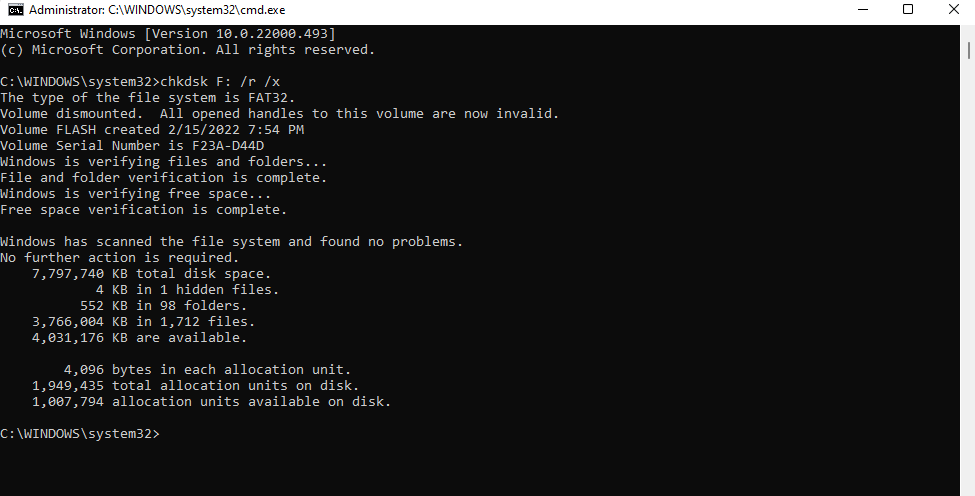
Method 3:Error Checking Tool on Windows
If you aren’t comfortable using a command-line utility, the Check Disk utility is also available as a tool with graphical interface.
- Press Win + R, type diskmgmt.msc, and press Enter to launch the Disk Management console.
- Right-click on the flash drive and select Properties.
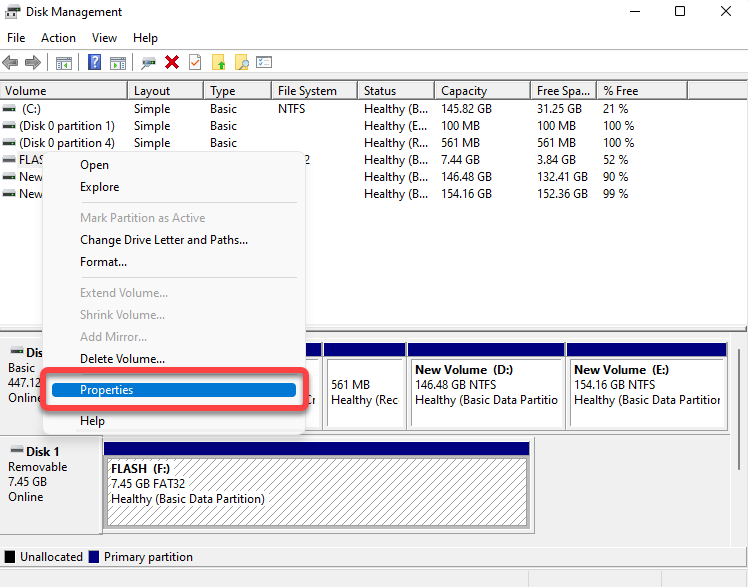
- Switch to the Tools tab and click on Check. The utility will scan your drive and try to repair the faults if it finds any.
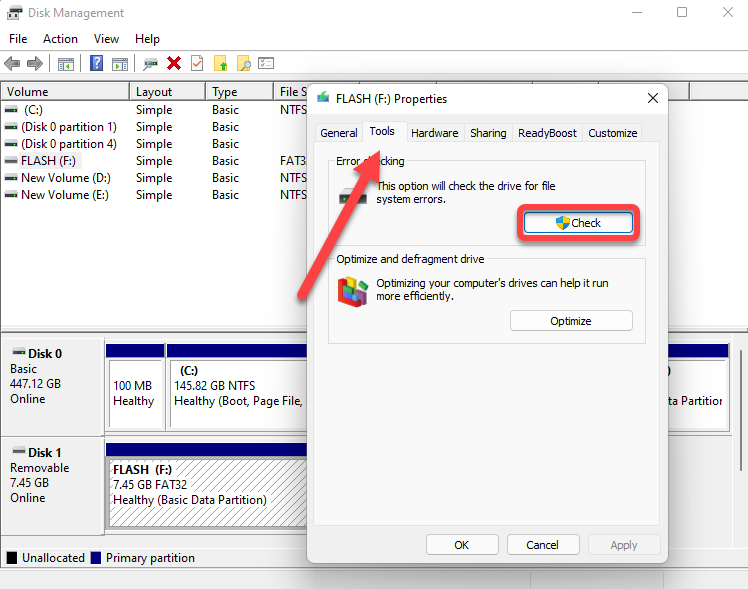
Method 4:Update the Drivers
A faulty driver can keep your computer from interacting properly with the USB flash drive. If none of the previous fixes have worked, updating your drivers might be worth a shot.
- Launch the Device Manager by pressing Win + R, typing diskmgmt.msc, and pressing Enter.
- Expand the Disk drives category, right-click on your USB device, and select Update driver.
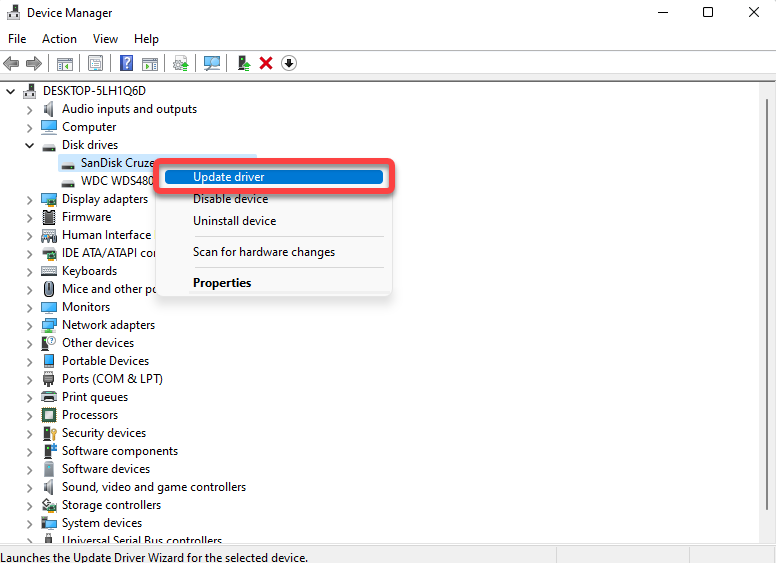
- You’ll see two options. You can select the first option if you want Windows to find the latest available driver and automatically install it, or the second option if you have the driver installation files on your PC.
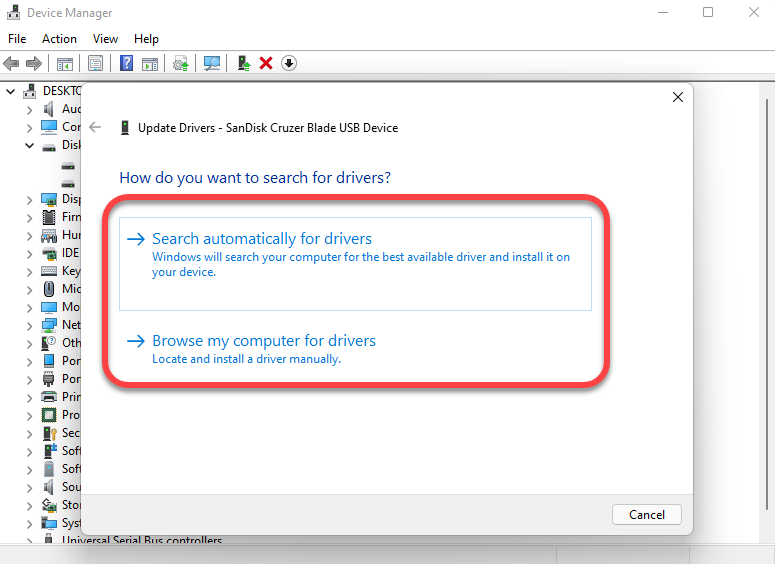 Since Windows isn’t all that great at finding drivers, you might want to default to using the second option, provided you have the driver installation files. You can usually get the latest drivers from the manufacturer’s website.
Since Windows isn’t all that great at finding drivers, you might want to default to using the second option, provided you have the driver installation files. You can usually get the latest drivers from the manufacturer’s website. - When you select the second option, you’ll see a file explorer window. Navigate to the folder where you’ve stored the installation files and continue following the wizard’s instructions until the installation is complete.
Method 5:Format the Corrupt USB Flash Drive
As a last resort, you might consider formatting your flash drive. Formatting will eliminate all logical issues on your USB flash drives, and will also wipe out any data you’ve stored on it. If you’ve already recovered your files, this shouldn’t be a problem.
- Start by pressing Win + R, typing diskmgmt.msc, and pressing Enter. Doing this will launch the Disk Management console.
- Right-click on the USB flash drive and select Format.
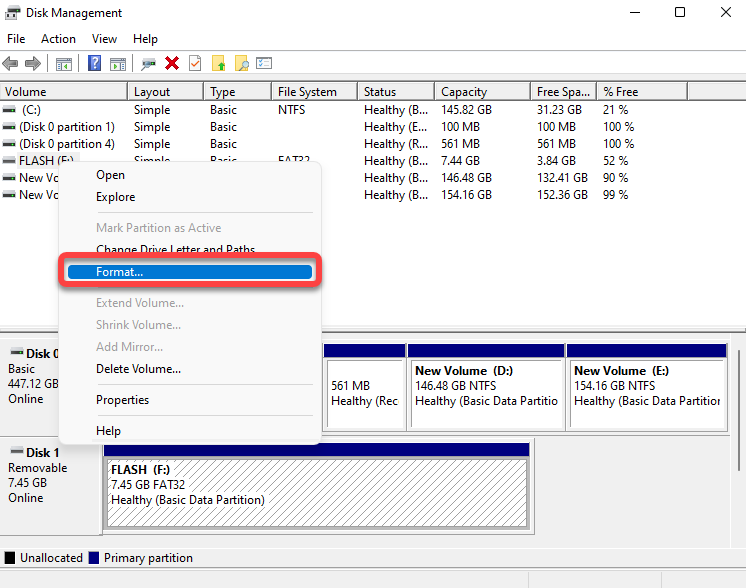
- Select a file system, check the box next to Perform a quick format, and click OK.
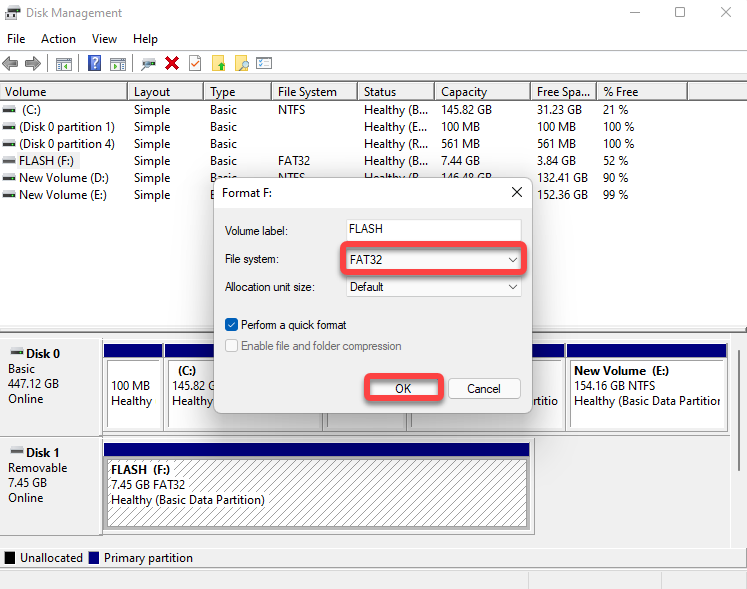
FAQ:
- Download and install Disk Drill.
- Scan the flash drive.
- Select the files you want to recover from the ones found during the scan.
- Recover the files.
